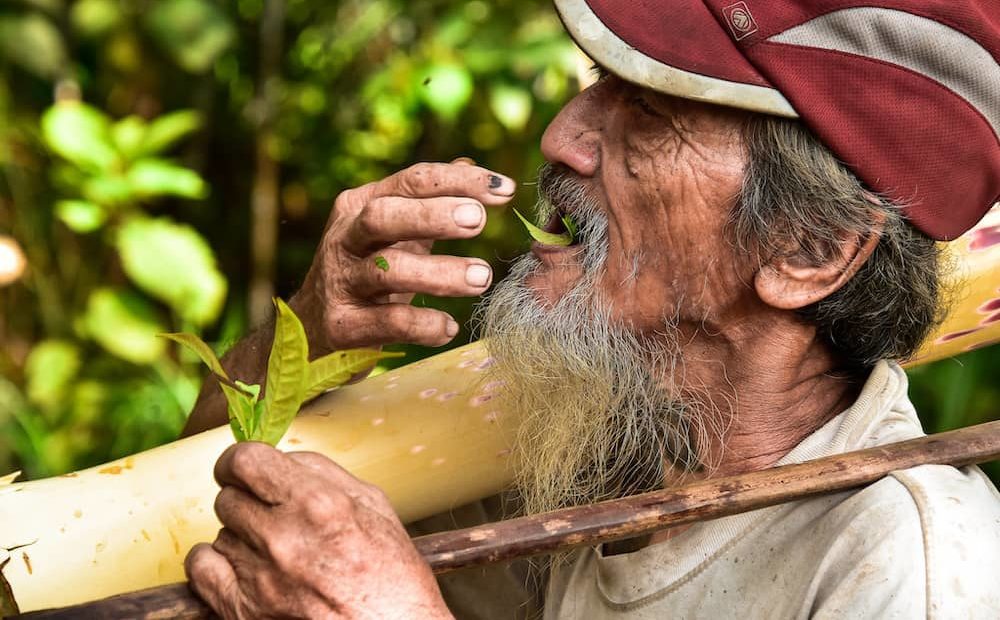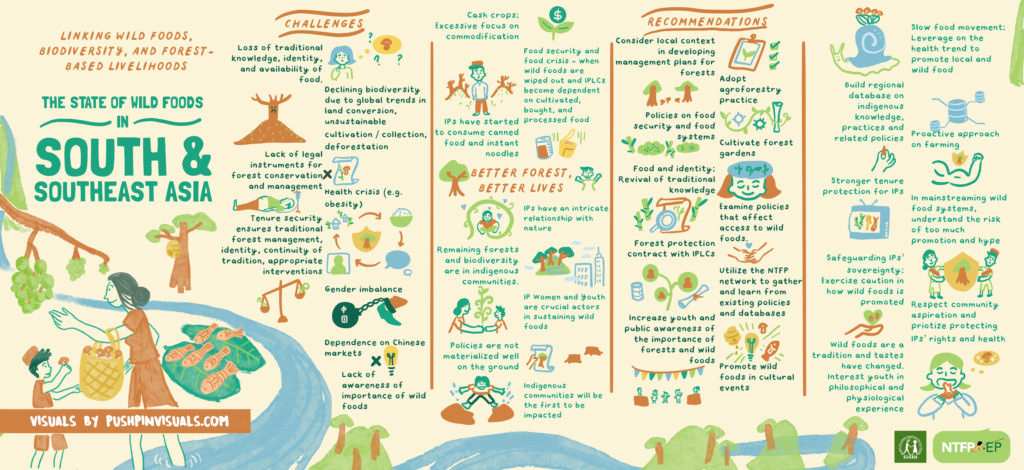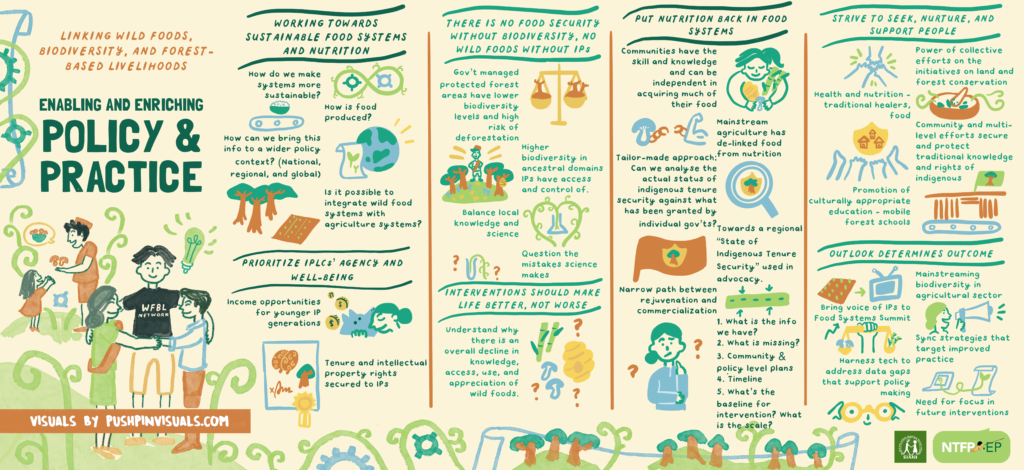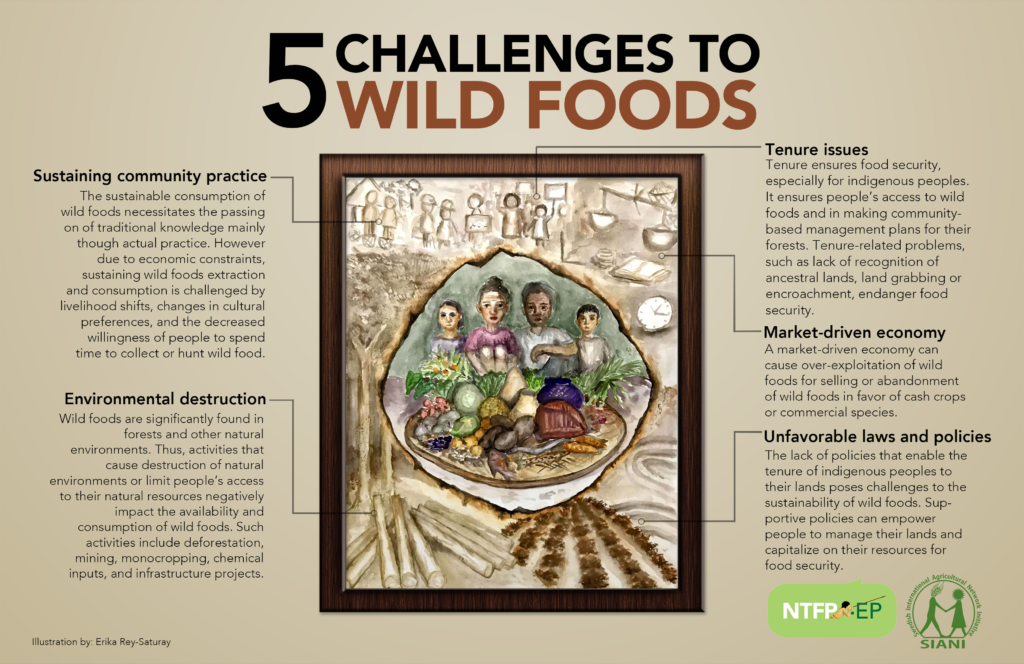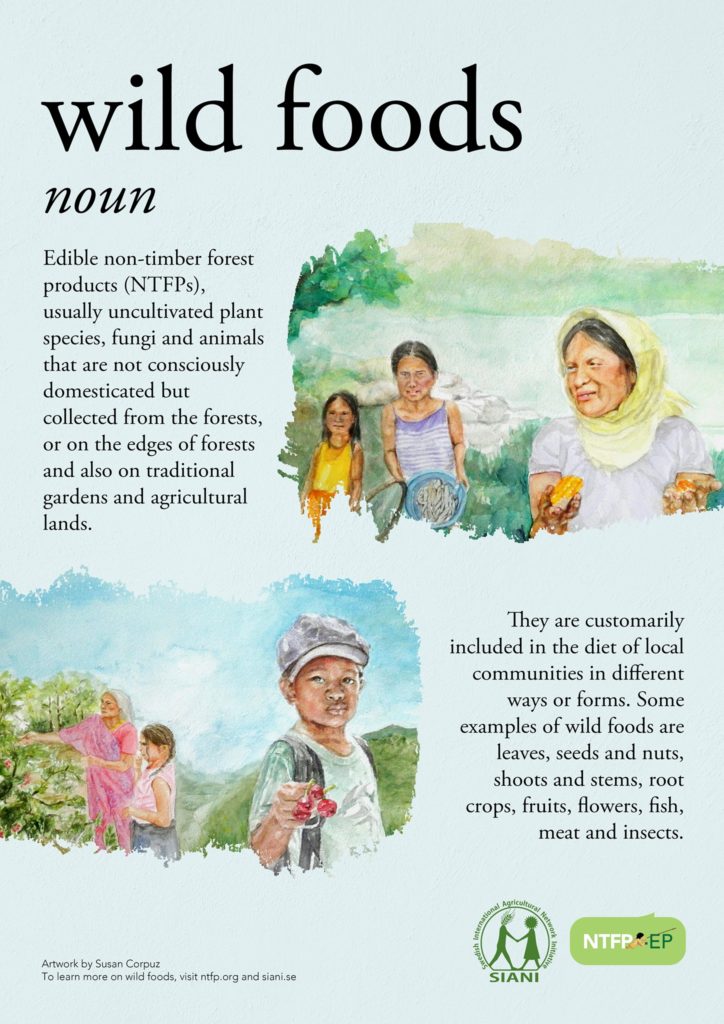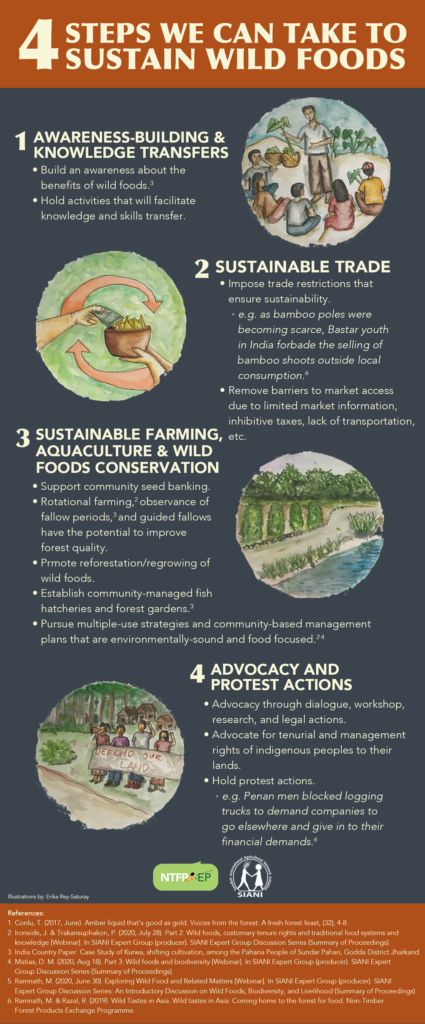Between March 8-12, 2021, the SIANI Expert Group working with Wild Foods, Biodiversity and Livelihoods in Asia organized for the first time a virtual forum on wild foods, biodiversity and forest-based livelihoods with the objective to explore an outlook towards inclusive food systems in Asia before 2030.
The forum provided a platform to discuss and reflect on policy and practice recommendations needed to create an enabling environment for indigenous peoples and local communities who utilise and manage wild foods. It was also a venue for stakeholders to interact and engage each other in supporting initiatives in wild foods and forest-based livelihoods. We have collected below some of the presentations and content shared during the forum.
There were over 300 attendees who participated in the events coming from the public, private, civil society, research/academia, and indigenous peoples and local communities sector. The forum was an important milestone in strengthening an emerging network on wild foods and traditional food systems in Asia, bringing together people with a common interest in advocating for sustainable food systems and wild foods conservation and revitalisation.
“At the end of the day, we aspire for harmony between local knowledge and science, and between policy and practice,” says Femy Pinto, Executive Director of NTFP-EP Asia and the Expert Group Lead.
The way forward
The website used for the virtual forum, wildfoodsasia.com, will be turned into an online resource page on wild foods that will be updated regularly.
Send a message to wildfoodsasia@ntfp.org if you want to be part of the network and/or want to contribute with information, research or stories about wild foods, biodiversity and livelihoods. Together, let us continue to explore the importance of wild foods, biodiversity and forest-based livelihoods and the role that each of us can play towards making our food systems more inclusive and sustainable.
Click the tabs below to see some of the content used during the virtual forum.
